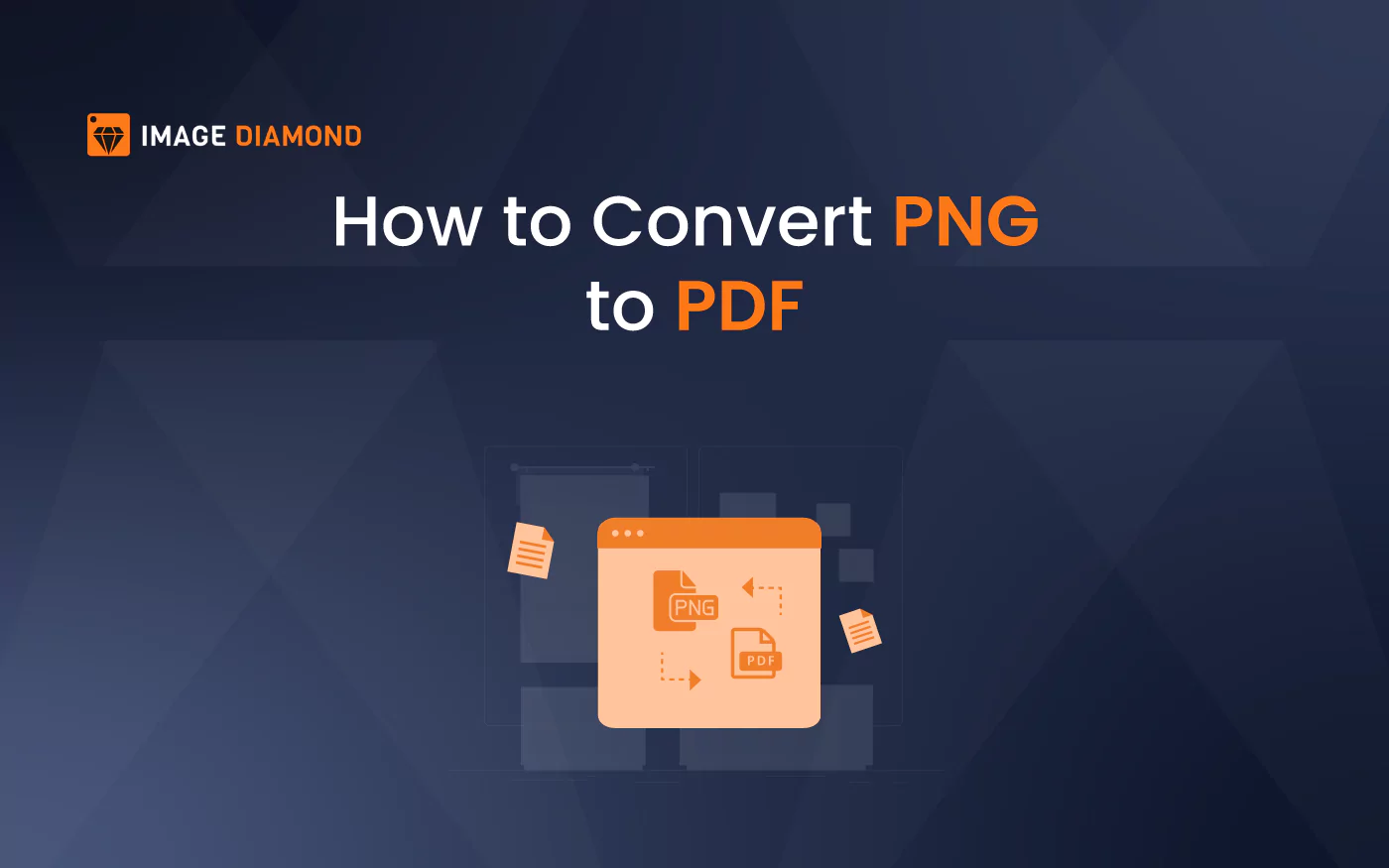
How to Convert PNG to PDF
The need to convert PNG
images into PDFs is a common challenge for both professionals and casual users
alike. Whether you're compiling a report, sharing important documents, or just
trying to reduce file size, PDFs offer a flexible and secure way to store and
present information. Converting PNG to PDF might seem complex at first, but a
range of user-friendly options makes it accessible to everyone. From quick
online tools to in-built system features and even custom coding solutions, this
guide will provide you with step-by-step instructions to convert your images
efficiently.
Table of Contents
By the end of this
article, you'll know how to:
- Use online tools for quick conversions.
- Convert using built-in features in Windows
and MacOS.
- Leverage professional-grade software like Adobe
Acrobat.
- Write Python code for batch conversion or more
advanced tasks.
Let’s dive deeper into how
each method works, and the advantages and disadvantages of each, so you can
choose the best method for your needs.
Why Convert PNG to PDF?
Before we explore the
various methods, let’s first understand why you might want to convert a PNG to
a PDF. Below are some of the key reasons:
- File size management: PDFs can compress image files without losing
much quality, reducing the overall file size.
- Print-readiness: PDFs maintain consistent formatting across
different devices and platforms, which is perfect for printing.
- Compatibility: While PNGs are great for images, PDFs are
much better for sharing documents, especially if they will be read or
viewed on different systems.
- Security: PDFs can be encrypted and password-protected, adding an
additional layer of security.
- Batch processing: Converting multiple PNG files into a single
PDF can help in combining several images into one document.
Method 1: Using Online Tools
One of the easiest ways to
convert PNG files to PDF is by using online tools. These platforms require no
installation and can be accessed from any device with an internet connection.
Some popular options include Smallpdf, ILovePDF, and PDF Candy.
Steps for Using an
Online Tool
- Go to a trusted website: Start by visiting a reliable site such as Smallpdf or ILovePDF.
- Upload the PNG file: Most of these websites will have a large
button to upload your file. Click on this and select your PNG file from
your computer.
- Choose your options: Some platforms allow you to configure
settings like paper size, orientation, or the ability to combine multiple
images into one PDF.
- Convert and download: Once your settings are in place, click on
the “Convert” button. The website will process your file and allow you to
download the PDF.
Advantages of Online
Tools:
- No installation required.
- Quick and easy to use.
- Works on any device with internet
access.
Disadvantages of Online
Tools:
- Requires internet connection.
- Some tools may limit file size or require premium
subscriptions for bulk processing.
- Privacy concerns if you’re uploading sensitive files to the
internet.
Method 2: Using Microsoft Print to PDF (Windows)
If you’re a Windows user,
converting PNG to PDF can be done without installing any additional software.
Windows comes with a built-in feature called Microsoft Print to PDF,
which allows you to “print” almost any file type directly to a PDF.
Steps to Use Microsoft
Print to PDF:
- Open the PNG file: Right-click on the PNG file and choose Open
With. Select Photos or any other image viewer.
- Open the Print dialog: Once the file is open, press Ctrl + P
on your keyboard to bring up the print options.
- Select “Microsoft Print to PDF”: In the printer dropdown, select Microsoft
Print to PDF as the printer.
- Configure print settings: Choose page size, orientation (portrait or
landscape), and any other print settings you require.
- Print to PDF: Click Print. You’ll be prompted to choose a location on
your computer where the PDF should be saved. Enter a name for the file and
click Save.
Advantages of Microsoft
Print to PDF:
- No additional software needed.
- Works offline.
- Can convert multiple file types, not
just PNG.
Disadvantages:
- Limited to single-file conversions (you
must repeat for each PNG).
- Fewer customization options compared to some
other tools.
Method 3: Using Preview (MacOS)
If you are using a Mac, Preview—the
default image viewer—provides an efficient way to convert PNG to PDF without
the need for third-party applications.
Steps to Use Preview:
- Open the PNG file: Double-click your PNG file to open it in Preview.
- Go to File > Export as PDF: In the top menu, click on File, then
select Export as PDF.
- Set file name and location: You’ll be prompted to choose a name for your
PDF and a location to save it.
- Click Save: That’s it! Your PNG will now be saved as a PDF.
Advantages of Using
Preview:
- Built-in on all Mac computers.
- Quick and easy process.
- Allows for batch conversions by opening
multiple images at once.
Disadvantages:
- Minimal customization for the PDF output.
- Limited to MacOS users only.
Method 4: Using Adobe Acrobat
For those who need more
advanced options, Adobe Acrobat is the industry standard when it comes
to PDF creation and manipulation. While it’s a paid tool, Acrobat offers
powerful features such as batch conversions, PDF editing, and the ability to
add annotations and watermarks.
Steps to Use Adobe
Acrobat:
- Open Adobe Acrobat: Launch the software and select Create PDF
from the options on the home screen.
- Select PNG file: Navigate to the PNG file(s) you want to
convert and click Open.
- Configure settings: Acrobat offers advanced settings, such as
image compression and page size adjustments, that you can configure during
the conversion process.
- Export the file: Once settings are configured, click Create.
Save the PDF file to your desired location.
Advantages of Adobe
Acrobat:
- Highly customizable PDF creation.
- Ability to combine multiple images into
one PDF.
- Supports batch processing.
Disadvantages:
- Paid
software.
- Overkill if you only need basic conversions.
Method 5: Using Python Script (for Developers)
If you’re comfortable with
coding or need to automate the conversion of multiple PNG files, Python
provides a quick and efficient way to convert PNGs to PDFs using libraries such
as Pillow.
Sample Python Script:
from PIL import Image
# Open the PNG file
png_image = Image.open('image.png')
# Save the PNG as a PDF
pdf_path = 'output.pdf'
png_image.save(pdf_path, 'PDF', resolution=100.0)
Steps for Using the
Script:
Install the required
library: To use this script,
you’ll need the Pillow library. Install it using pip:
pip install Pillow
- Edit and run the script: Replace 'image.png' with the path to your PNG file, and 'output.pdf' with your desired output path.
- Run the script: Execute the Python script, and your PDF will
be generated in the specified location.
Advantages of Using
Python:
- Perfect for batch processing or
large-scale conversions.
- Offers flexibility to adjust conversion
settings (e.g., resolution, compression).
- Can be automated for repeated tasks.
Disadvantages:
- Requires coding knowledge.
- Not suitable for one-time or non-technical
users.
Comparison of Methods
|
Method |
Ease of Use |
Customization |
Batch Processing |
Offline Capable |
Cost |
|
Online Tools |
Very Easy |
Low |
Limited |
No |
Free/Premium |
|
Microsoft Print to
PDF |
Easy |
Low |
No |
Yes |
Free |
|
Preview (MacOS) |
Easy |
Low |
Yes |
Yes |
Free |
|
Adobe Acrobat |
Moderate |
High |
Yes |
Yes |
Paid |
|
Python Script |
Difficult |
Very High |
Yes |
Yes |
Free |
Which Method is Best for You?
Choosing the right method
to convert PNG to PDF largely depends on your specific needs:
- If you’re looking for speed and simplicity,
an online tool is your best bet, especially if you don’t convert
PNGs often.
- Windows users can take advantage of Microsoft Print to PDF for a
quick, offline solution.
- MacOS
users can use Preview, which offers basic functionality with the
added benefit of batch processing.
- If you need professional-level
customization and features like password protection or annotations, Adobe
Acrobat is the way to go.
- For developers or those comfortable with
coding, a Python script allows for the greatest flexibility,
especially if you're handling bulk conversions or need specific image
settings.
Conclusion
Converting PNG files to
PDF is a relatively straightforward task that can be done in various ways,
depending on your resources and technical abilities. Whether you're working
with a single image or converting dozens at a time, there's a method to suit your
workflow. From online tools and built-in features on Windows and MacOS to more
advanced options like Adobe Acrobat and Python scripting, this guide has
provided a comprehensive overview of the available techniques.
By understanding the pros
and cons of each approach, you can now choose the best method for your needs.
Whether you're a casual user or a professional, converting PNG to PDF can be as
simple or as advanced as you require.
Frequently Asked Questions
1. Can I convert
multiple PNG files into one PDF?
Yes, many tools, including
Adobe Acrobat and online tools like ILovePDF, allow you to
combine multiple PNG images into a single PDF.
2. Is there a quality
loss when converting PNG to PDF?
Typically, converting PNG to PDF does not result in a noticeable loss of quality, but some online tools or software might compress the images to reduce file size.


.png)




